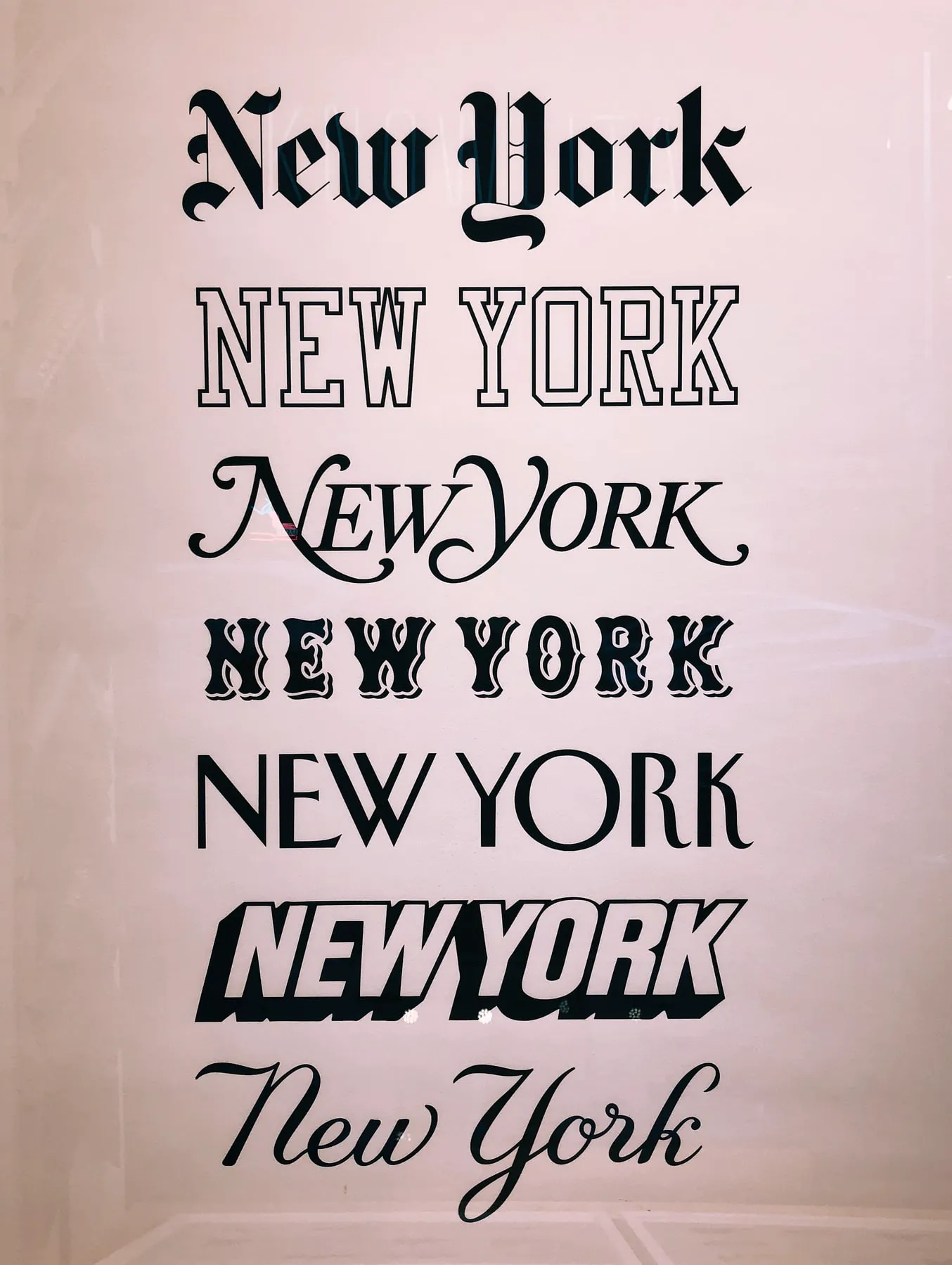How to Create a Brand in 7 Steps
Launching a new business has never been
easier, but branding that business can be a lot more challenging. Building your brand has
never been more important, with consumers choosing brands as much as they are
choosing a product or
service. Most of us recognize branding when we see it, and the
advantages of strong branding are well-known, but knowing how to brand your business
can sometimes feel like an insurmountable challenge.
Fortunately, learning the
best ways to define your
brand or how to strengthen your existing brand is not as difficult as you might have
thought. Here's our quick guide that will take you through each step of how to create a brand, define your brand, and
use it to help your business grow.

How To Create a Brand - Step One: Target Audience
One of the most important parts of any business plan is customer research. You can have the best product in the world, but if you don't know who is going to buy it, then you're going to struggle to sell it.
Different audiences will require different marketing strategies, different tones of voice in communications, and different products. You wouldn't advertise to teens in the same way that you communicate with octogenarians! Also, on your business plan should be some robust competitor reach. This is also a key part of building a great brand. Look at your competitors, see where they market themselves and how they communicate.
● Are they casual, funny, serious?
● Do you think their tone of voice is right for the product and target audience?
At this stage, it's often a good idea to get advice from a professional branding agency that can help with research and ensure that you make no mistakes at this first stage of your branding. You can then use that research to:
● Identify the target audience who may not be targeted by other brands
● Identify your main competitors (the established brands)
● Identify the tone of voice used by those competitors and by your target audience
You will now have the first suggestions of what kind of brand you will be building.

How To Create a Brand - Step Two: Personality/Focus
A common mistake with branding is to try
and appeal to everyone. While this can be a long-term goal, at launch, your
focus should be a lot narrower. You will need to identify your key area of
focus, which will help guide every decision you make as you build your brand.
Think about your positioning statement and brand personality. This is something that breaks
down into one or two sentences and explains exactly what your business is.
Something like:
● We sell skateboards to teenagers with limited budgets, unlike our main competitors who target the richer suburbs.
● We offer plumbing services to residents in Lakeside, Colorado who are usually overlooked by our leading competitor.
● We are starting a clothing company that sells sustainable clothes made from bamboo for female millennials. Unlike our competitors, we donate $1 for every sale.
Think about what makes you different, as
this will be one of the most important parts of your brand. Are you a social enterprise?
Do you have a core mission statement about your goals? You want to be able to
tell a brand story
quickly and easily.
Brainstorm the words that you would associate with your
brand, using metaphors if you get stuck. Building a brand means starting your
business from the ground up, and that means you need a firm foundation.
How To Create a Brand - Step Three: Choosing a Brand Name
This will be the first big decision that
you have to nail down. Your business name is going to have to communicate as
much as possible about your brand. Your choice of name is going to affect your
logo choice and all of your marketing strategies. It needs to be easy to
remember, unique, and as different from your competitors as possible. There are
plenty of business name generators available online that can help you with your
brainstorming sessions.
Build a shortlist of potential names, and then check
that there is availability for that name in terms of website domains (this will
play a key part in your brand
strategy). Check with members of your target audience to make sure that there are no
negative aspects that you have overlooked.
How To Create a Brand - Step Four: The Slogan
Not every brand needs a catchy slogan,
but it can be a useful marketing asset. It needs to be descriptive, brief, and
just as suitable on a business card as it will on your social media and your website. Remember
that you don't have to stick with a single slogan forever.
Companies like Pepsi
have used over 30 slogans in their long history! Here are some of the most
recognizable brand slogans to get inspiration from:
● Just Do It - Nike
● Think Different - Apple
● Where's the Beef? - Wendy's
● Because You're Worth It - L'Oreal
● Melts in Your Mouth, Not in Your Hands - M&Ms
● A Diamond is Forever - De Beers
Like business name generators, there are plenty of free slogan generators to experiment with to get some ideas for your brand slogan.

How To Create a Brand - Step Five: Fonts and Colors
You now need to define the appearance of
your brand. This is one of the most common branding agency services to make use of because it can be quite difficult to get right. You
might think that choosing something as simple as a font is just a matter of
sticking to whatever Word or Google Drive defaults to, but the wrong choice can
have very negative consequences. The ideal is to choose two fonts (one will be
for headers, and one will be for body text, so it's important for your website
and your printed marketing materials). The goal with fonts is to make them easy
to read, and the two font choices need to match.
Once you've chosen your fonts,
it's time to think about color palettes. Color is an essential part of building your brand
because color conveys so much immediate information. Just a quick look at the
psychology of colors can help break down the best options to choose from, but
don't forget to make sure that your color choices don't negatively affect your
font choices.

How To Create a Brand - Step Six: Company Logo
When most people think of branding, they think of the logo first, so it's rather obvious that it's a critical step when building a brand. That company logo will be the representation of your brand, and that means it needs to fit everywhere that you use it. From your social media pages, your website and product pages, your printed marketing materials, invoices, and custom promotional products: your logo needs to look good and be memorable wherever it is. A company logo can come in a range of graphic design types, which is useful for coming up with ideas. Consider:

● Abstract: Look at logos like Google Chrome or Pepsi. It means nothing, but can be used and recognized everywhere.
● Mascots: Wendy's and Pringles are good examples of mascot logos. They can be useful because they can humanize a brand, but they are less common to see with new businesses.
● Emblems: The NFL, Starbucks, and BMW use immediately recognizable emblem logos, but they can be over-designed and difficult to read.
● Lettermarks: Using the initials of your company in a unique design can be very impactful. Look at IBM, HBO, and CNN.
● Icons: Apple, Twitter, and Amazon all use icon logos, which differ from abstract versions because they tell your target audience something about the product.
● Wordmarks: Any logo that is simply your company name in a variety of color styles is a wordmark logo. Facebook, FedEx, and Netflix use wordmark logos but they can be difficult to scale, so they lose visibility when they are too small.

How To Create a Brand - Step Seven: Apply the Branding
The key to effective branding is consistency. Now that you have the foundation of your brand, you need it to be everywhere that you have a presence. It should be on your social media pages, your website, your custom made hats, all of your promotional products and materials, every piece of paperwork, and every email that you send. The more that you use it, the more that you will reinforce it.
You have now finished building a brand to its basics. It's important to remember that brands can change and evolve as your business grows. Always monitor your brand reach, brand awareness, and brand value. Avoid inconsistencies and make sure that every member of your team has access to your branding guidelines, and your business will only benefit.